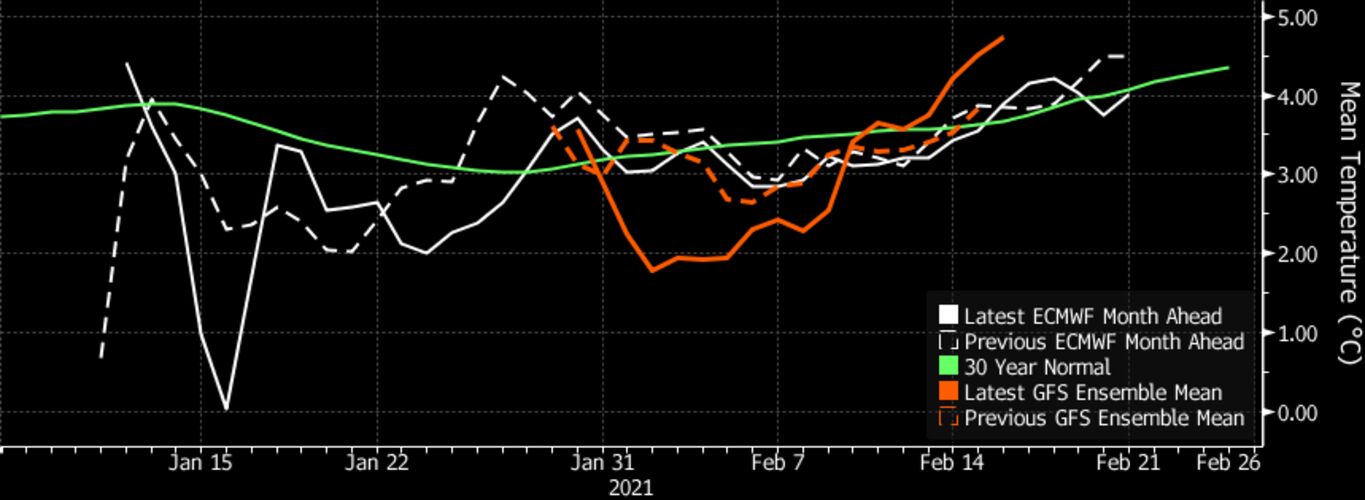Freezing weather that’s sweeping the northern hemisphere is causing chaos in energy markets and damaging infrastructure with households from Japan to Pakistan and France being asked to curb their electricity use. In Asia, extreme cold prompted record-high power demand and a scramble for natural gas to keep the lights on in China, Japan and South Korea. In Sweden, heavy snow brought down sections of the power grid while French households were advised to delay doing their laundry to save energy.

The extreme, widespread cold took markets by surprise. The spikes in energy demand during the bitter winter, coupled with weak wind generation, power plant closures and liquefied natural gas tanker delays highlighted the shortcomings of global energy systems in weather conditions that are only set to get more volatile.
There could be more to come. A relatively rare weather phenomenon with the potential to disrupt the polar vortex — the winds that usually keep cold air contained in the far north — is threatening to send an Arctic blast across North America, Europe and Asia from late January.

Month-ahead forecast for northwest Europe shows temperatures dipping
The Weather Company
“The distortion of the polar vortex appears to be prolonging the severe winter conditions in some northerly areas and potentially Europe,” said David Thomas, independent adviser and former head of LNG at Vitol Group. “It may not be over just yet. Several companies are feeling the pain and the elevated power prices must be hurting large consumers.”
The extreme conditions left some energy traders and utilities flat-footed, sending prices for electricity, fuel and vessels to record highs.
In Asia, LNG spot rates jumped 18-fold from last year’s lows and helped send European gas prices to a 12-year peak. Britain’s national grid was forced to issue numerous appeals for generators to increase output as low wind generation coincided with the cold snap and pushed wholesale electricity prices for peak periods to more than 1,000 pounds ($1,367) a megawatt hour.
European gas markets like the U.K. and Spain, which don’t have large amounts of gas storage, and are more dependent on the “incredibly tight global LNG market are more exposed if below normal temperatures are sustained,” said James Huckstepp, manager for EMEA gas analytics at S&P Global Platts.
Lights Out
China is struggling to keep the lights on after some of the lowest temperatures since 1966 boosted domestic demand just as manufacturing ramped up after the pandemic. Ice is also wreaking havoc on grid infrastructure, while the frigid weather disrupted transport and delayed LNG tankers at Qingdao.
Big industrial users are first in line to have electricity supplies cut, followed by commercial buildings, in order to keep supply safe for residential consumers.
Meanwhile in Japan, its utilities have asked consumers to conserve electricity, and the government has ordered independent producers to boost output to maximum capacity.
Tohoku Electric Power Co. bought several cargoes of low-sulfur fuel oil for oil-fired power plants that are utilized only when gas-fed facilities have been maximized. Japan’s Ministry of Economy, Trade and Industry has begun speaking to refiners and urged them to help supply local utilities with LSFO supplies.
